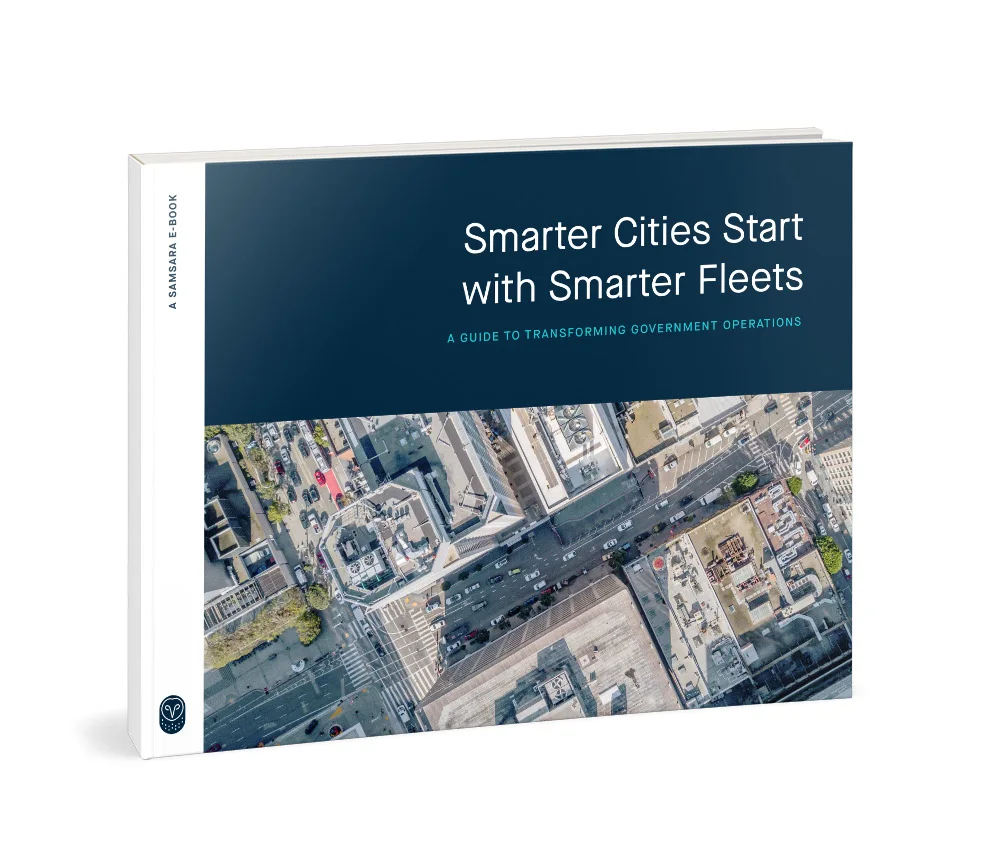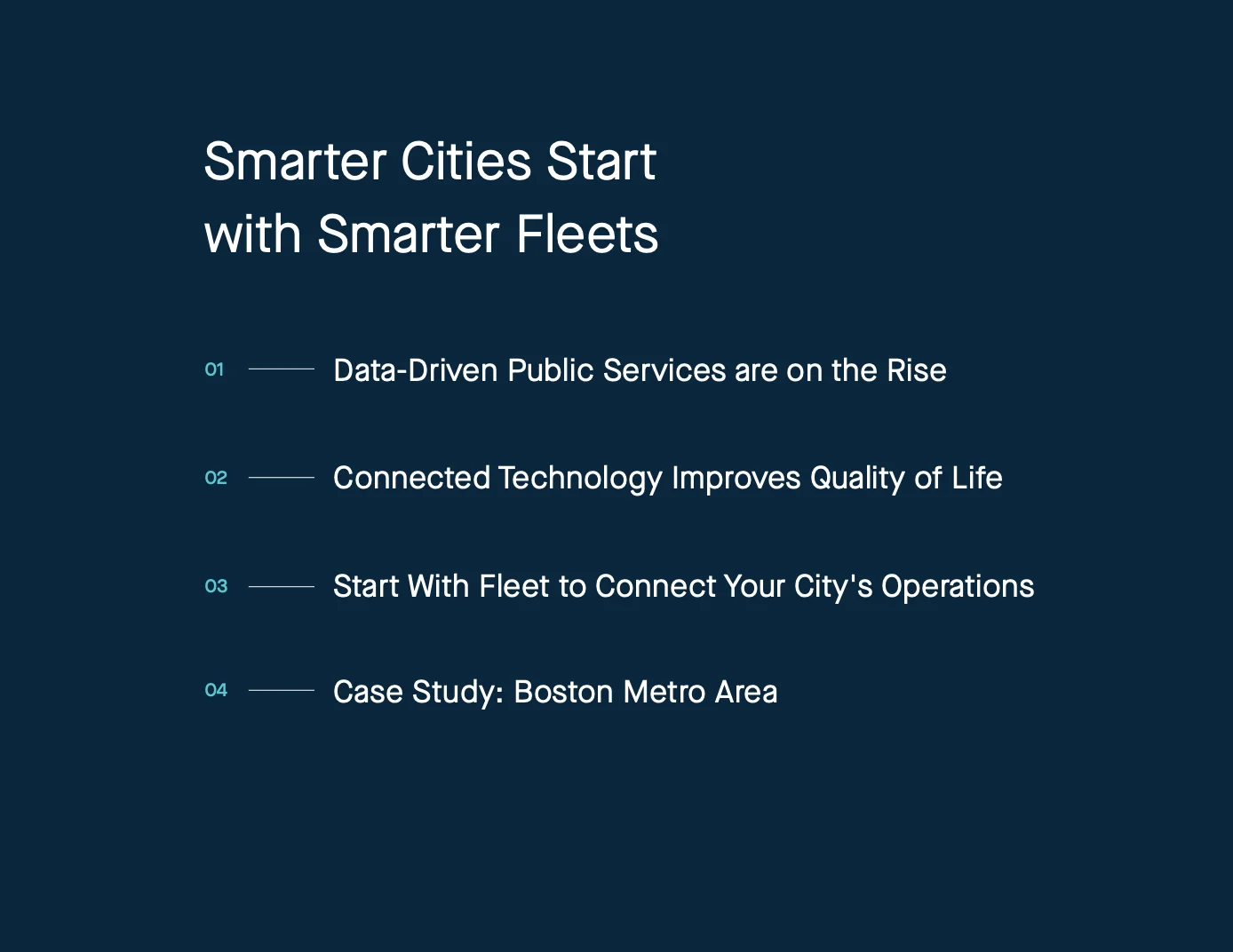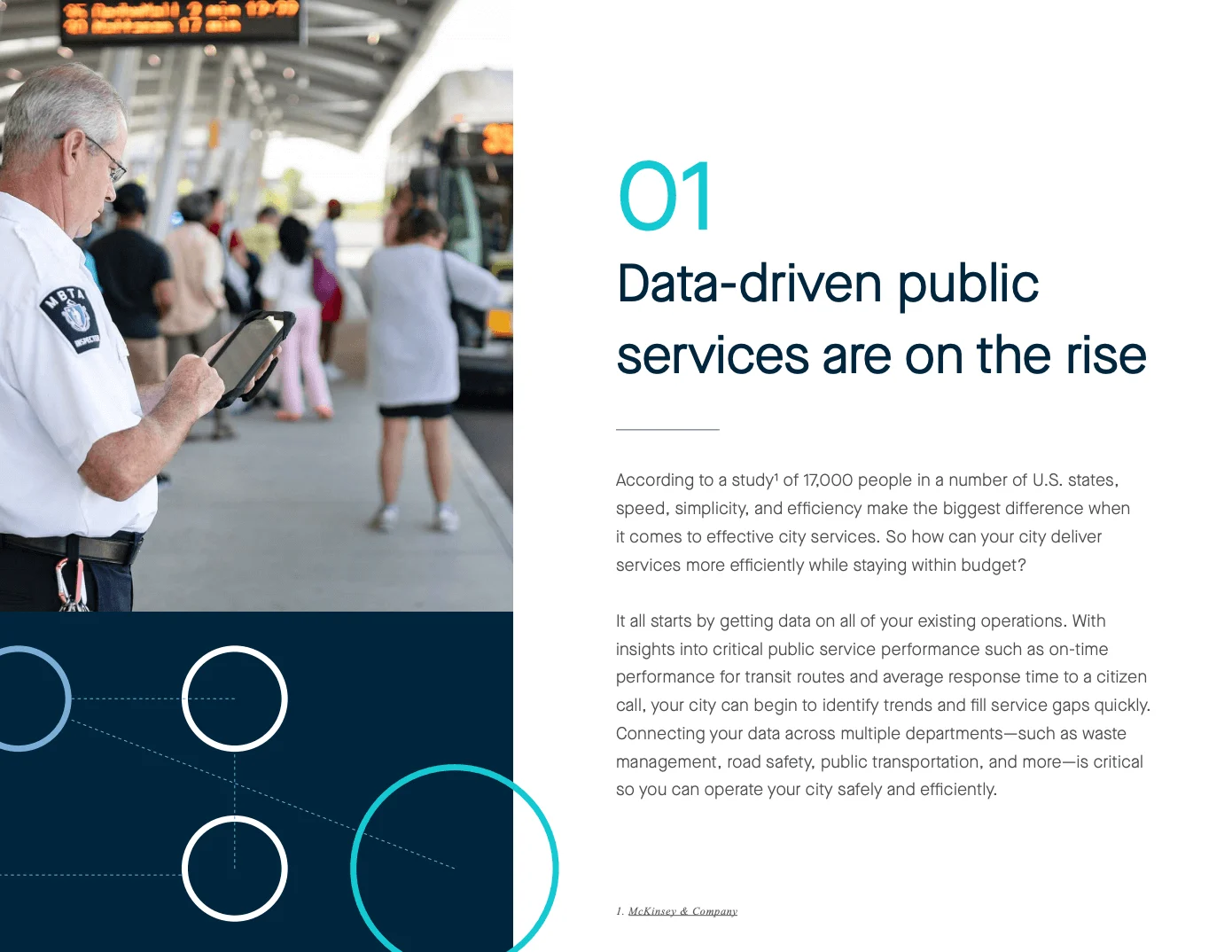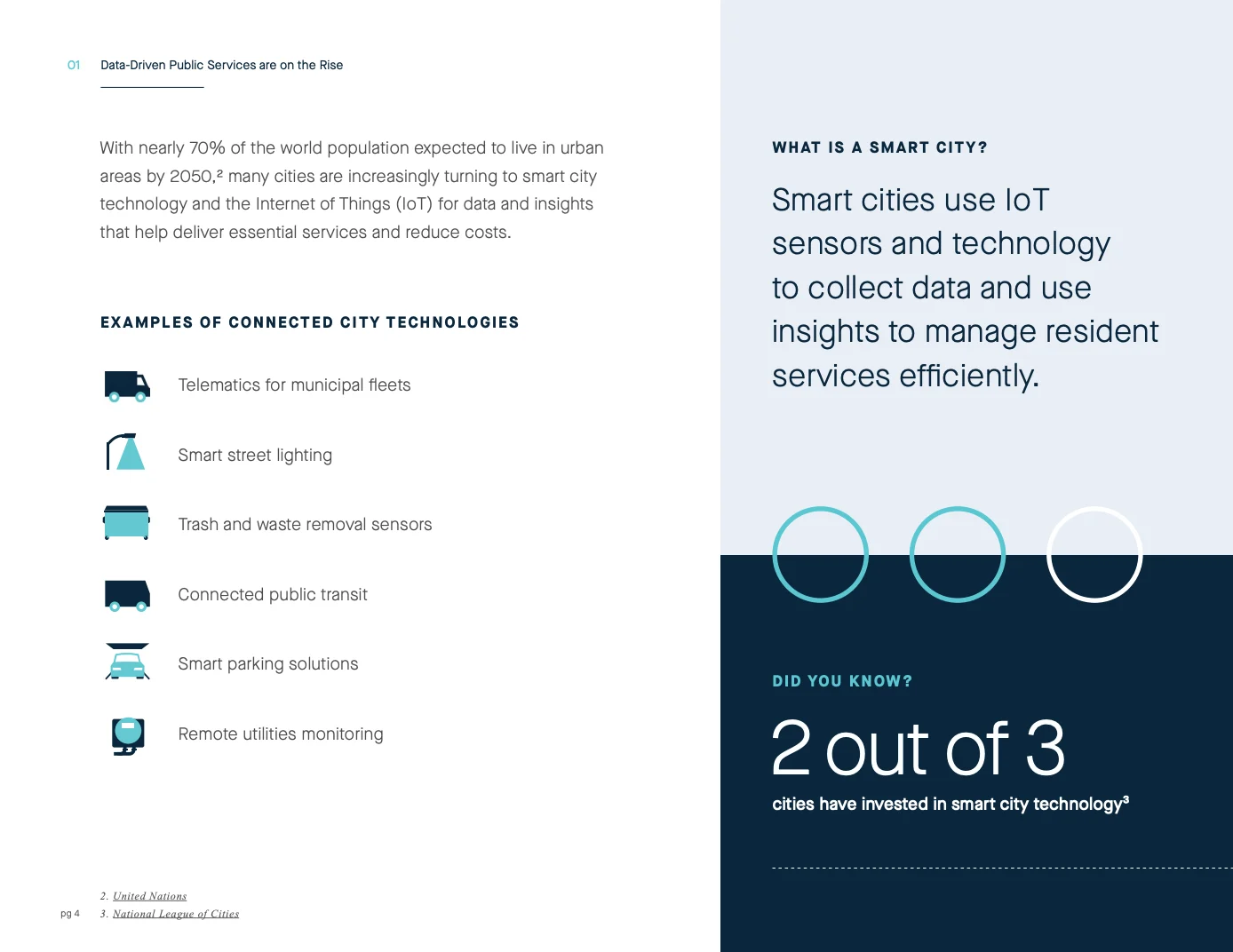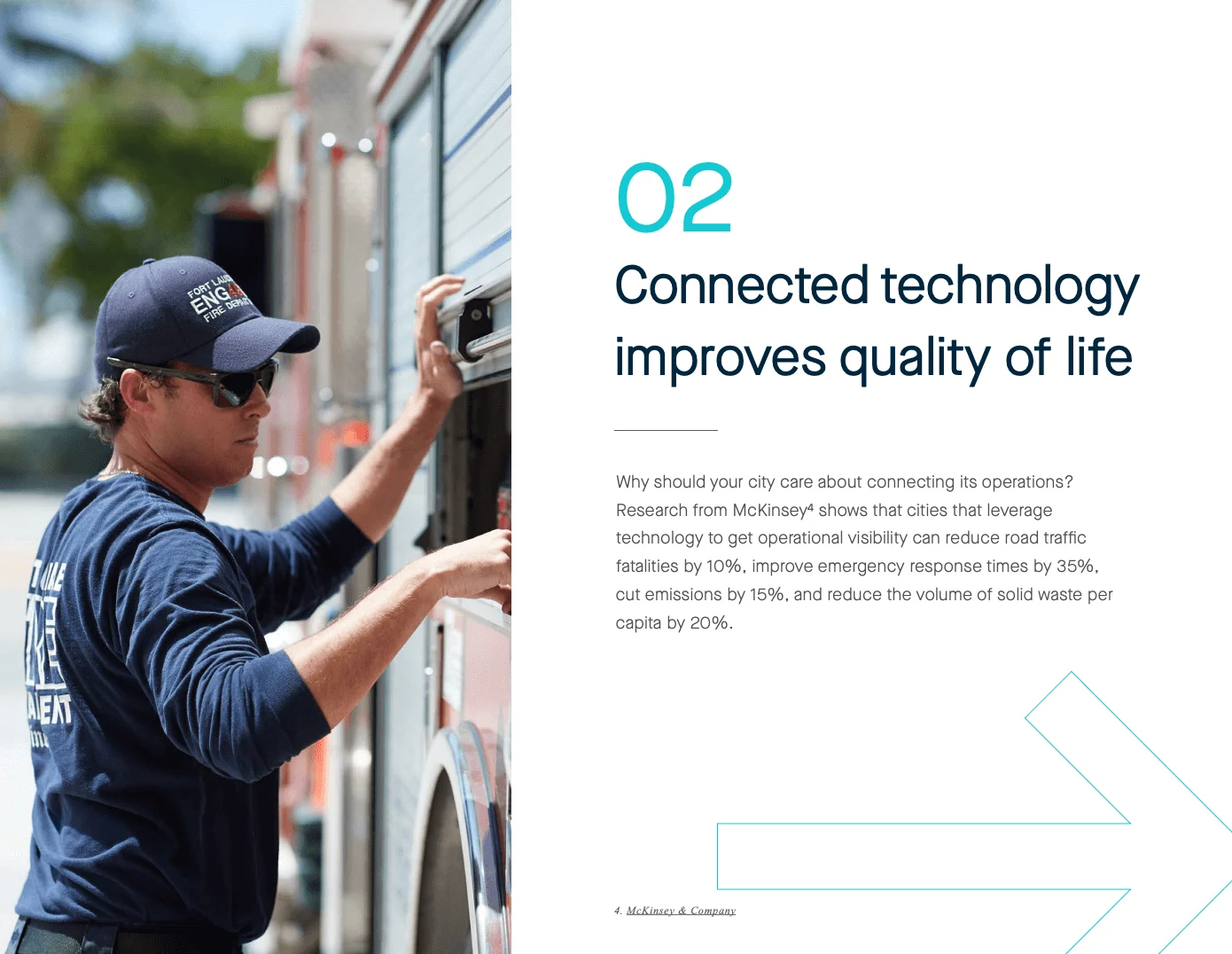EBOOK DOWNLOAD
Smarter Cities Start with Smarter Fleets

Kickstart your smart city initiative with smart fleet technology. Learn how a smarter fleet will help you gain more insights into your city's operations and improve city services.
There is a lot that goes into delivering the services that people have come to expect. Collecting good data is important in making decisions in how we deliver services.
Chris Lagerbloom
City Manager, City of Fort Lauderdale
Kickstart your smart city initiative
Leverage smart city technologies to improve your city services
According to a study of 17,000 people in a number of U.S. states, speed, simplicity, and efficiency make the biggest difference when it comes to effective city services. So how can your city deliver services more efficiently while staying within budget?
It all starts by getting open data on all of your existing operations. With insights and big data into critical public service performance such as on-time performance for transit routes and average response time to a citizen call, your city can begin to identify trends and fill service gaps quickly. Connecting your data across multiple departments—such as waste management, road safety, public transportation, and more—is critical so you can operate your city safely and efficiently. Download this free in-depth guide to learn how your city’s fleet can use Internet of Things (IoT) solutions and fleet management to put citizens’ needs first. You’ll get hands-on tips from the City of Boston and the MBTA, and learn how to improve your urban areas with new technologies and data analytics.
Connected technology improves quality of life
Research from McKinsey & Company shows that cities that leverage new technology to get operational visibility can improve public safety and reduce road traffic fatalities by 10%, improve emergency response times by 35%, improve air quality and cut emissions by 15%, and reduce the volume of solid waste per capita by 20%.
In addition, connected cities have the opportunity to reduce citizens’ average commute by 15-30 minutes per day, resulting in fewer cars on the road and better air quality for your city. Improvements like these not only show your commitment to improving the public safety, efficiency, and sustainability of your urban environments, but they can also reduce costs and increase the confidence your citizens have in your services.
Start with fleet to connect your city’s operations
Budget constraints can make it difficult for local governments to invest in smart city technology all at once. Instead of trying to pilot new smart technologies or embarking on massive changes to city infrastructure, experts recommend starting your smart city initiative with one of the highest-impact areas of your operations—your fleet.
How the Boston metropolitan area leverages smart city technology
In order to improve their public services, the City of Boston invested in Samsara IoT sensors to connect and monitor their municipal fleet, including their electric vehicles. Now, the City’s public works department has complete visibility into the real-time locations of their vehicles so they can better track services such as snow plowing, waste management, and street light maintenance.
Similarly, the MBTA leveraged Samsara's IoT sensors with WiFi connectivity and mobile app to track traffic congestion during peak commute times in order to improve public bus performance.

